#strix demon
Text


Just guys getting arrested...
A little piece I did for my fanfiction Colliding Trains of Plot. If you enjoy role-reversal AUs and/or have a deep need to see the Demon Slayer protagonists thrown vastly out of their depth... might want to give it a read?
#demon slayer#kimetsu no yaiba#demon slayer fanart#rui demon slayer#enmu demon slayer#colliding trains of plot#this is basically how their encounter with shinobu and giyu went wasn't it?#Strix draws things
9 notes
·
View notes
Text
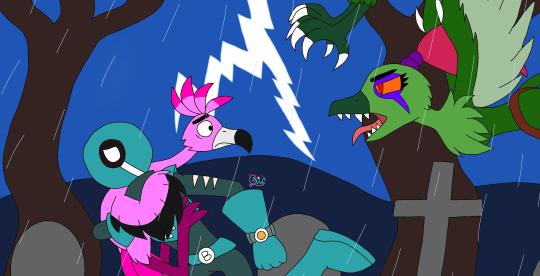


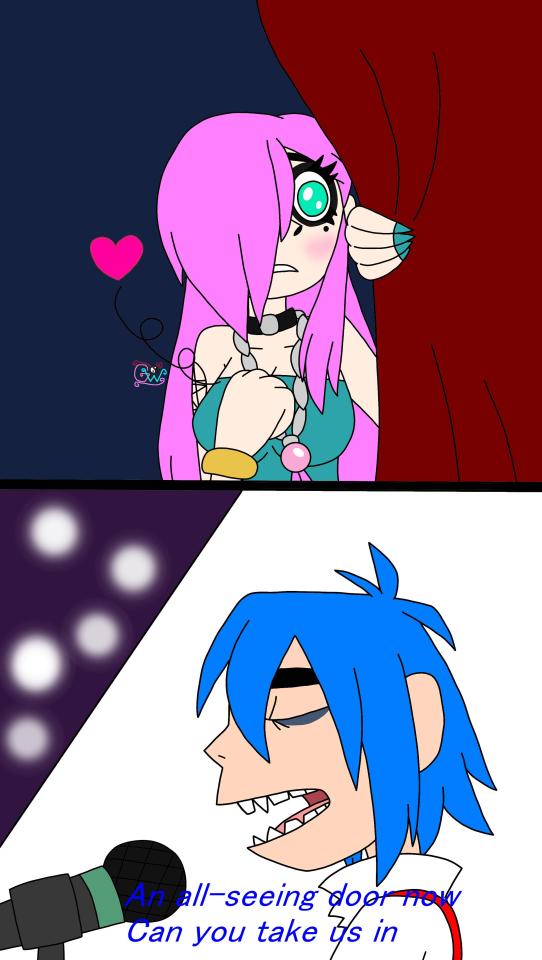

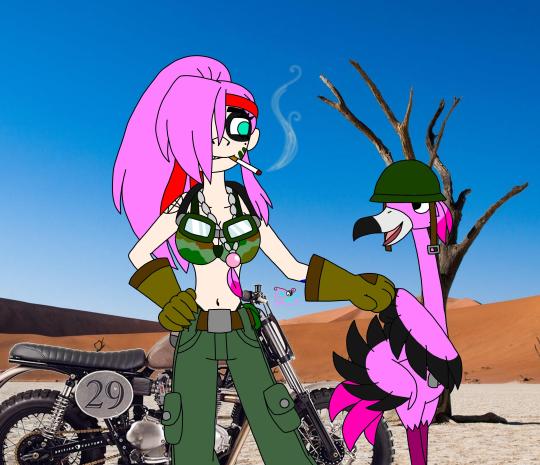

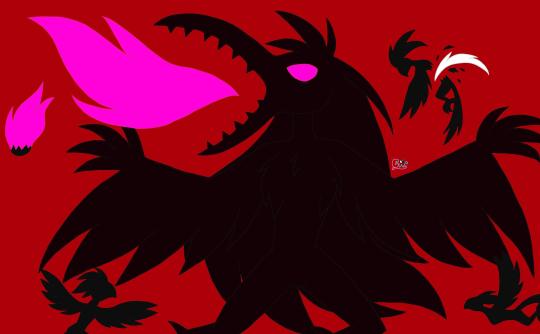


Phase 2 (2005-2007): Poursuivie par des démons à plumes nommés les stryges, Stacy et Fify se réfugient au Studio Kong, où elle rencontre les Gorillaz. Elle s'entraîne en suivant le rythme, en chantant et en jouant du piano, de la guitare et avec le matériel DJ. En retrouvant sa passion pour la musique, elle décide d'utiliser son surnom "Chel" comme nom et rejoint le groupe en devenant une figure fraternelle pour Noodle (qui l'appelle "Onēsan" en japonais ou "Big Sister" en anglais). 2-D tombe amoureux de Chel, car elle l'inspire. Et du coup, ils passent du temps ensemble et en musique. Elle apprend plus tard qu'elle est la dernière héritière du pouvoir de Phenex, le démon-phénix. Elle comprend pourquoi les stryges la pourchassent depuis toujours. Après avoir déchainé son côté démonique sur les stryges et avoir commis de gros dégâts, Chel en compagnie de Fify rejoint leur amie, Noodle sur une île au moulin flottante pour trouver sa sérénité. Mais lors de l'attaque des hélicoptères, elle perd Noodle dans le crash de l'île flottante, après avoir atterrit avec Fify. Sauf qu'elle ignore que son amie japonaise a survécu.
#emo girl#flamingo#gorillaz ocs#gorillaz#demon days#gorillaz phase 2#dare#dirty harry#feel good inc#el mañana#phenex#last living souls#2D x oc#strix#gorillaz chel
6 notes
·
View notes
Text
Now some Vampire Lore, which also explains why Lucy mainly attacks children and is Voluptuous. Other than children being a much easier, vulnerable target for a new vampire, especially at night, and vampires being attractive to lure people to them:
One of Stoker's primary sources was Ármin Vámbéry, a Hungarian-Jewish traveler and orientalist. Van Helsing even gives him a shout-out in the book later. Stoker consulted him a lot about the legends in the Balkans and Austria-Hungary (where Transylvania was at the time).
Dracula is heavily based on the area's Strigoi. And partly on the Estries (which are associated with the Succubi: Beautiful, blood-thirsty female demons, with succubi thought to favor babies and young children as prey.) The Strigoi are closer to what we know as vampires due to them rising from the grave, or being created by something unholy. So Lucy turned into a child-drinking succubus.
The Strigoi and Estries both:
Gain vitality by drinking human blood
Can shapeshift into animals
Influence people's minds
Mainly feed on infants
the Strigoi target also young girls, the Estries all genders but mostly men
On the child feeding, Wilhelm Schmidt reports in 1865 the tradition "upon the birth of a child, when one tosses a stone behind oneself and exclaims "This into the mouth of the strigoi!" Note the stones found in the skulls of people suspected to have been vampires.
There are striking similarities between them and the Estries. Note the common "strix" root. Screaming is also a feature that they have, which is similar to the banshee, but this attribute is not as prominent in Dracula yet.
More about the Count and less about Lucy: The Strigoi are associated with sorcery, something that will be relevant in Dracula. The Strigoi influence people's minds, especially those who are ill, have sleeping issues, suffer from alcoholism, and more. This is shown by Dracula's influence on the sleepwalking Lucy and likely on Renfield.
#dracula daily#re: dracula#historical context#count dracula#lucy westenra#jack seward#mythological#dracula#jonathan harker#cw child death mention
674 notes
·
View notes
Text
One of the things I hear a lot from Gentile witches and neo-pagans who want to work with Lilith or claim to work with Lilith, is that she is actually a Mesopotamian goddess, usually either Ishtar/Inanna or Erishkigal, and that it was the Jews, with their horrible patriarchy juice, who slandered her and cast her down, and so the Jews do not deserve to say what happens to her and it isn't antisemitism to work with her, or to completely ignore what the Jews say about what she is in a Jewish context.
Lilith is not Ishtar or Erishkigal. However, there is a Mesopotamian figure that is pretty stinking analogous to Lilith, and is probably her folkloric ancestor, by which I mean the idea of Lilith probably comes from this Mesopotamian figure. In fact, Lilith almost certainly is either a Jewish version of this figure, or, they are both descended from the same Near Eastern and Mediterranean basin folkloric figure. That figure is Lamashtu.
Lamashtu is, much like Lilith, the supernatural embodiment of maternal and infant mortality, a figure of power and terror, who functions as a way to embody and cope with the profound dangers that are pregnancy, childbirth, and infancy without effective medical care. the Mesopotamians never worshiped Lamashtu, but they did seek to appease her, including making symbolic gifts to her, to keep her from visiting them, and killing them or their children.
An interesting side note is that there is also a Mesopotamian figure who specifically opposes Lamashtu and functions as the protector of pregnant women and infants, and that figure is Pazuzu, a wind spirit, who ruled over other wind spirits, including ones called the Iilu in the Akkadian language. Akkadian is a Semitic language, related to Hebrew, and this word is probably a cognate of Lilith, but the Iilu probably have no relationship to the figure of Lilith except her name. You might know Pazuzu as the demon featured in the movie, The Exorcist, and ironic fate for a mythological protector of women and children.
Anyway, if you'll remember, I implied above that the Lamashtu/Lilith figure, was present in various guises throughout the Mediterranean basin and the Near East, so there are of course figures analogous to both of them throughout the region, such as Lamia of Greece, and the Strix of Rome.
So if you really really want to work with a figure who functions as the supernatural embodiment of maternal and infant mortality, Lamashtu, Lamia, or the strix would all be excellent options that don't come from an extant closed religious practice. All the baby killing, none of the antisemitism and cultural appropriation.
While all three figures are almost certainly descended from the same folkloric root, they're all subtly different, because as stories and characters travel, they change. as such, they all have particular good points about them as figures of veneration.
Lanashtu is the OG bad bitch, who commanded fear, respect, and offerings, like a mythological mafiosa, collecting protection money.
Lamia has attached to her the story that she was one of Zeus's dubiously willing lovers, who was screwed over first by Zeus, the embodiment of patriarchical rule, then by a jealous Hera, the embodiment of patriarchal marriage, so if what attracted you to Lilith was the story from the Alphabet of Ben Sira, about a victim of the patriarchy getting her own back through violent vengeance, Lamia might be the girl for you. With her however, the emphasis is less on her murder of children, then on her seducing and eating men, though she does also get strongly associated with killing children, especially boys.
And the strix is particularly interesting, because the word comes down to us in the modern Italian word for witch, striga. Indeed, one of the theories as to where the witch figure came from in Early Medieval, and then Early Modern Christianity, was as the strix demon made human. This might explain the close association between Early Modern Witchcraft and infant mortality, including Italian stories of witches causing infants to die seemingly natural deaths, so that they could dig them up and eat them after their funerals, something that ties these human supposed witches very closely to demonic folkloric antecedents. If you are looking for a figure of unfairly maligned female power, the strix and her close association with later human witches, might be the one for you.
All three of these figures, much like Lilith herself, are reflections, both of the power women wielded even within patriarchal societies, over the process of pregnancy, birth, and childrearing, and also the powers of death and loss that everyone was subject to. There is something powerful, transgressive, and even healthy in acknowledging the fears and dangers presented by this death and loss,and for some people, that might take the form in venerating the underlying powers. If this is something that would be spiritually meaning for you, and you wish to work with such a figure, and you are not Jewish, please respect the fact that Lilith is part of a closed religious practice, and remember that Lilith has sisters, in other parts of the Mediterranean basin and the Near East, who are not from extant closed cultures, and who might serve your needs better anyway.
666 notes
·
View notes
Text
How To Write Vampires With An Original Twist
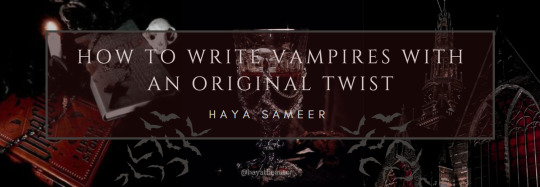
Mythical creatures are an essential part of the fictional scene, but the same creatures have been used so many times that these creatures now often seem redundant and boring in fiction. This is why I've started a new blog series: How To Create Original Mythical Creatures. I'm kicking off this series with vampires!
Join me as we dive into the world of vampires, from their mythical beginnings to their modern-day interpretations, and learn how to write them effectively in your own narratives.
Origins of Vampires
Vampires have a rich and diverse history rooted in ancient folklore and legends. Across various cultures and civilizations, tales of bloodsucking creatures have emerged, each with unique characteristics and behaviors.
One of the earliest known vampire myths comes from ancient Mesopotamia, where stories of blood-drinking demons known as Lilitu or Lamashtu date back to around 3000 BCE. These entities were believed to prey on humans, particularly targeting children and pregnant women.
In ancient Greece, the Lamia was a mythical creature often depicted as a female vampire who lured and devoured children. Similarly, in Roman mythology, the Strix or Strigoi were vampiric entities that fed on blood and flesh.
Moving forward in history, Slavic folklore introduced the concept of the Upyr, a vampire-like creature that rose from the dead to feed on the living. These early depictions of vampires often portrayed them as revenants or undead beings with a thirst for human blood.
Modern-Day Vampires: Where Were They Originated?
The modern concept of vampires, as we commonly know them today, took shape during the European Middle Ages and the Renaissance. Legends of vampires emerged in Eastern Europe, with notable figures like Vlad the Impaler contributing to the folklore. Vlad's reputation for cruelty and his association with impaling enemies on stakes led to the creation of the vampire archetype, inspiring Bram Stoker's iconic character, Count Dracula.
From ancient Mesopotamia to medieval Europe, vampire lore has evolved and adapted, weaving its way into popular culture and literature. Understanding the origins of vampires provides writers with a rich tapestry of mythology to draw upon when crafting their own bloodsucking creatures.
I wanted to go into more detail regarding the Lamashtu and Lamia since they’re not as well known as their Slavic and European counterparts, but unfortunately, that would deviate from the purpose of this blog.
The Evolution Of Vampiric Appearances
Before we proceed with this section, it's crucial to clarify that the mythical creatures and beings discussed in this blog are not direct representations of ancient vampires. Instead, they serve as inspirations for the concept of vampires and share certain attributes with our modern-day depictions, including blood-feeding, pale skin, human-like appearance with some animalistic features, and so on.
Vampiric Creatures In Mythology
In ancient mythology, vampiric entities were not always depicted as the suave, charming figures we see in modern vampire tales. Instead, they often embodied primal fears and monstrous traits.
Lamia: In Greek mythology, Lamia was a terrifying creature depicted as a woman with a serpentine lower body. She was known for her insatiable hunger for children, often depicted as a child-eating monster. Lamia's appearance combined elements of human and serpent, emphasizing her monstrous nature and predatory instincts.
Lamashtu: In Mesopotamian mythology, Lamashtu was a malevolent demon who preyed on pregnant women and newborns. She was depicted with a fearsome appearance, often described as having the head of a lion, the body of a donkey, and bird-like talons. Lamashtu's grotesque features and destructive tendencies reflected ancient beliefs about the dangers of childbirth and infancy.
Lilitu: In Mesopotamian and Jewish folklore, Lilitu or Lilith was often associated with nocturnal demons or spirits. She was depicted as a seductive, winged demoness who preyed on men and newborns. Lilitu's appearance varied across different myths but often included features like wings, long hair, and sometimes talons, emphasizing her otherworldly and dangerous nature.
Strix: In Roman and Greek mythology, the Strix was a bird-like creature or vampiric owl associated with dark omens and death. It was believed to be a shape-shifting creature that could transform into a woman or an owl. The Strix's appearance combined avian and human features, instilling fear and dread in those who encountered it.
Strigoi and Upyr: In Eastern European folklore, Strigoi and Upyr were blood-sucking undead creatures similar to modern-day vampires. Strigoi were believed to be restless spirits or revenants that returned from the dead to torment the living. Upyr, on the other hand, were vampire-like beings with sharp fangs and a penchant for drinking blood. Both creatures were depicted as pale, gaunt, and often with elongated canines, reflecting their predatory and undead nature.
Medieval Depictions: Shift in Appearance
During medieval times, the depiction of blood-sucking mythological creatures underwent a transformation, shifting from monstrous and terrifying to more humanoid and relatable appearances. This change in portrayal can be seen in various aspects of their physical features:
Teeth: Originally depicted with long, sharp fangs or talons for blood-drinking, medieval depictions often featured more subtle fang-like teeth or no visible teeth at all, aligning with the concept of vampires being able to blend in with humans.
Skin: While ancient vampires were often described as monstrous and otherworldly, medieval vampires were portrayed with paler skin to signify their undead nature but without extreme deformities or monstrous features.
Appearance: Medieval vampires were often depicted as more human-like in appearance, with regular clothing and a less monstrous demeanour. This shift allowed for more nuanced storytelling and exploration of themes like temptation, desire, and the struggle between humanity and monstrosity. This is also what birthed the romanticization of vampires.
Mythological Vampire vs Modern-Day Vampire
Mythological vampires, rooted in ancient folklore and mythology, were often depicted as malevolent spirits or creatures with supernatural powers. These creatures varied widely across different cultures, from the Lamia and Lilitu in Mesopotamian mythology to the Strix in Roman and Greek folklore, and the Upyr in Slavic tales.
These ancient vampires were not always the suave, charismatic beings we see in modern media. Instead, they were often portrayed as terrifying and monstrous, with features that reflected their otherworldly nature. For example, the Lamia was described as a demonic woman with the ability to transform into a serpent, while the Lilitu were associated with storm demons and fertility spirits.
In contrast, modern-day vampires, especially those popularized in literature and film, have undergone significant transformation. They are often depicted as sophisticated and alluring, with a penchant for romance and drama. Authors and filmmakers have humanized vampires, giving them complex personalities, tragic backstories, and even moral dilemmas.
While modern vampires still retain some traditional attributes such as a need for blood and sensitivity to sunlight, their portrayal has evolved to include a wide range of characteristics and abilities. This shift has allowed for more diverse and nuanced storytelling, exploring themes of immortality, love, redemption, and the eternal struggle between good and evil.
Which Option Is Better For Your Novel?
When deciding which type of vampire to incorporate into your story, consider the tone and themes you wish to explore. Mythological vampires offer a darker and more primal essence, rooted in ancient fears and superstitions. On the other hand, modern-day vampires provide a canvas for exploring human emotions, relationships, and societal issues through a supernatural lens.
Ultimately, the choice between mythological and modern vampires depends on the narrative direction and atmosphere you want to create. Both types offer unique storytelling opportunities, allowing you to craft captivating tales of mystery, romance, horror, or even philosophical introspection.
Research and Resources
Writing about mythical creatures like vampires requires a solid understanding of folklore, mythology, and literary traditions. Here are some resources and research methods to help you delve into the world of vampires and other mythical beings:
Books and Literature
Start by exploring classic works of literature that feature vampires, such as Bram Stoker's "Dracula," Anne Rice's "The Vampire Chronicles," and Stephenie Meyer's "Twilight" series. These novels not only showcase different interpretations of vampires but also delve into the cultural and historical contexts surrounding these creatures.
Mythology and Folklore
Dive into ancient myths and folklore from various cultures to uncover the origins of vampire legends. Look into Mesopotamian, Greek, Roman, Slavic, and other mythologies to discover different vampire-like entities and their characteristics.
Research Journals and Articles
Academic journals and articles can provide valuable insights into the evolution of vampire folklore, the psychological aspects of vampirism, and the cultural impact of vampire mythology. Explore journals in folklore studies, literary analysis, and cultural anthropology for in-depth information.
Online Resources
Utilize online platforms such as mythology databases, folklore websites, and literary forums to gather information and engage in discussions about vampires. Websites like The Vampire Library, Vampire Empire, and Vampire Rave offer a wealth of resources for vampire enthusiasts and writers.
Historical Research
Delve into historical records, archival documents, and historical accounts related to vampire hysteria, vampire burials, and vampire folklore in different regions. Understanding the historical context can add authenticity to your portrayal of vampires.
Interviews and Expert Opinions
Consider reaching out to folklore experts, historians, and scholars specializing in vampire mythology for interviews or consultations. Their insights and expertise can provide valuable perspectives on vampire lore and storytelling.
Creative Exploration
Don't hesitate to let your imagination roam while exploring vampire mythology. Experiment with creating your own vampire mythology, incorporating unique traits, powers, and origin stories for your vampires.
By combining thorough research with creative exploration, you can develop rich and compelling portrayals of vampires in your writing. Remember to stay open to diverse interpretations and adaptations of vampire folklore, allowing room for innovation and originality in your storytelling.
I hope this blog on How To Write Vampires With An Original Twist will help you in your writing journey. Be sure to comment any tips of your own to help your fellow authors prosper, and follow my blog for new blog updates every Monday and Thursday.
Looking For More Writing Tips And Tricks?
Are you an author looking for writing tips and tricks to better your manuscript? Or do you want to learn about how to get a literary agent, get published and properly market your book? Consider checking out the rest of Haya’s book blog where I post writing and publishing tips for authors every Monday and Thursday! And don’t forget to head over to my TikTok and Instagram profiles @hayatheauthor to learn more about my WIP and writing journey!
#hayatheauthor#writing community#haya sameer#haya's book blog#writing tools#writing advice#writer things#writer community#haya blogs#writers on tumblr#writing life#writing techniques#writing stuff#writer tools#writers of tumblr#writer blog#women writers#writer stuff#writer advice#writer tips#creative writing#novel writing#writing vampires#vampire#vampire books#writerblr#writing corner#writing inspo#ya writing advice#writing tips and tricks
126 notes
·
View notes
Text
Nesuferitul
So, we’ve gotten to the part in Dracula Daily where Bram Stoker starts throwing around the word nosferatu. Stoker got the word from Emily Gerard, who mentions it in her works on Transylvanian superstitions which Stoker used for research, where she makes it out to be the Romanian word for vampire. In this she is backed up by German writer Wilhelm Schmidt, who also treated it as the Romanian word for vampire.
The word “vampire”, by the way, came to English from French, to French from German, and to German via Hungarian from the Slavic languages. Romanian is not a Slavic language, but a Romance language, as you might guess from the name.
Thing is, there is no such word as “nosferatu” in Romanian. However, other German writers like Heinrich von Wlislocki treat “nosferatu” or “der Nosferat” as a Romanian word, so researchers who have gone down rabbit holes trying to derive it from the Greek for “diseased” or the Latin for “not breathing” or some Slavic basis are, quite frankly, barking up the wrong tree.
Instead, it’s way more likely that “nosferatu” is a Germanicization of a Romanian word before Romanian spelling was standardized, which it wasn’t even in the late nineteenth century.
The Romanian word “nesuferit” literally means “insufferable”. The prefix “ne” indicates the negative, the root “suferi” means “suffer.” However in practice nesuferit doesn’t mean “insufferable” as in “oh, that annoying man is insufferable”. Instead the meaning is much more in the sense of unbearable, offensive, horrible, diseased. It’s a word used to mean “unclean” in a taboo way. To talk about an “unclean spirit” means to talk about an incubus or succubus, something that draws your strength or poisons your soul through sex. Now, the nominative masculine definite form of a Romanian noun adds the suffix -ul. We see this with Vlad II Dracul. Dracul means “The Dragon” with the “the” also communicating male. The addition of “-ea” to “Dracul” as in Vlad III Draculea gets us “Son of the Dragon.” So, something is “nesuferit” if it is horrid or unclean or unbearable, thus “nesuferitul” is “The Horrid One”, etc. It’s male and it’s a thing and it’s awful.
Nesuferitul is an incubus, a male demon that impregnates its victim. The child of a nesuferitul and its victim is born a moroi, a kind of living vampire born (un)dead. Meanwhile, a person who committed some great sin or buried in unhallowed ground or without rites would come back from the dead a strigoi, to feed on the living.
Nesuferitul was transliterated into German as Nosferatu, where it was assumed to be the Romanian word for vampire, but is in fact an incubus. From there it found its way to Bram Stoker, who took it to mean undead. “The Undead” in Romanian would literally be “nemortul”, by the way. Moroi means something like “the nightmarish one”, while strigoi means something like “the screaming one”, and is cognate with terms derived from Latin “strix” or “striga”, which became the root for “witch” in many Romance languages. Interestingly, the Slavic root origin of vampire is also thought to come from a word originally indicating a witch.
Anyways, there you are. “Nosferatu” is not a “real” word, at least, not a real Romanian word, and certainly not the Romanian word for a vampire. But don’t go too hard on Bram Stoker, he was only as good as his sources. This was a hundred years before online search engines, after all.
#the more you know#Ben wrote this#He's the Romanian one#dracula#dracula daily#romanian#nosferatu#nesuferit#nesuferitul#strigoi#moroi#language#etymology#someone's gonna bring up the word necurat#but I didn't want to overcomplicate this#necurat literally means unclean in a way nesuferit only implies#but necurat is much less likely to be turned into nosferat by a German than nesuferit quite frankly#vampires#scream scene podcast#we talk about this in our Nosferatu episode#episode 10 by the way
1K notes
·
View notes
Text
A LEGENDARY/MYTHOLOGICAL/SUPERNATURAL CREATURE LIST FOR WRITERS:
(Please note that while I have included a variety of creatures, there are many many others that I haven’t been able to mention here. Had I listed every legendary/mythological/supernatural creature, I’d probably still be writing this post because let’s face it, there are thousands of badass mythological beings. Please also note that there are quite a few creatures that overlap in various categories. I hope that you all enjoy reading and that this helps with your writing!)
Animals:
birds (bird people, caladrius, griffon, harpy, hippogriff, luan, phoenix, roc, sirin, strix, thunderbird.)
canines (amarok, cadejo, cerberus, fenrir, hellhound, werewolf.)
felines (demon cat, griffin, merlion, sphinx, tigris, underwater panther, white tiger.)
fish (hippocamp, undine, water spirit.)
primates (bigfoot, yeti, yowie.)
reptiles/serpents (basalisk, dragon, feathered serpent, hydra, loch ness monster, rainbow serpent, sea serpent, wyvern.)
Elements:
aether (angel, demon, devil, elemental, elf, fairy, nymph, spirit.)
darkness (black dog, bogeyman, ghost, grim reaper, hellhound, vampire, werewolf, wild hunt.)
earth/subterranean (dwarf, earth dragon, gargoyle, giant, gnome, goblin, hobbit, ogre, troll.)
fire (dragon, hellhound, phoenix.)
light/rainbow (light elf, rainbow serpent.)
metal/gold (griffin, gnome, leprechaun.)
thunder/lightning (chinese dragon, cyclops, thunderbird, valkyrie.)
water (chinese dragon, drindylow, loch ness monster, mermaid/merman, nymph, pisces, water dragon, water spirit.)
Habitat:
cave/underground (dwarf, european dragon, gnome, goblin, troll.)
celestial/heaven (angel, feathered serpent, pegasus, grim reaper, swan maiden, valkyrie.)
desert (amphisbaena, chupacabra, cockatrice, ghoul, oliphaunt, sphinx.)
woodland (bigfoot, elf, unicorn.)
lake/river (chinese dragon, hydra, kraken, nixie, lake monster, ondine, rainbow serpent, warlock.)
mountain/hill (dwarf, griffin, hippogriff, hobbit, mountain giant, yeti.)
sea (dragon king, fish people, leviathan, mermaid/merman, sea monster, sea serpent, shen, siren, water dragon.)
polar/ice/winter (abominable snowman, jotun, yeti.)
urban/house (banshee, boggart, jinn, vampire.)
underworld/hell (cerberus, cyclops, demon, devil, earth dragon.)
Humanoids:
human skinned (brownie, dwarf, elf, fairy, giant, gnome, gremlin, jinn, leprechaun, nix, nymph, pixie, siren, valkyrie, vampire, vetter.)
monster skinned (banshee, boggart, centaur, demon, ent, goblin, imp, manticore, mermaid/merman, orc, siren, sphinx, troll.)
monstrous (baba yaga, boogeyman, cyclops, gargoyle, ghoul, giant/giantess, goblin, hag, jotun, mummy, ogre, oni, orc, titan, troll, yeti, zombie.)
Hybrids:
part human (angel, centaur, fairy, faun, gorgon, harpy, horus, meduza, mandrake, manticore, mermaid/merman, minotaur, siren, sphinx, tenju, triton, winged genie, werecat, werewolf.)
non-human (basilisk, capricorn, cerberus, chimera, griffin, hippogriff, merlion, pegasus, typhon, wyvren.)
Shapeshifters: (animagus, demon, kelpie, merpeople, nix, werecat, werehyena, werejaguar, werewolf.)
Undead: (banshee, ghost, ghoul, frankenstein, headless horseman, mummy, poltergeist, skeleton, spirit, vampire, wraith, zombie.)
#writing prompt#writing ideas#writing tips#creative writing#writers of tumblr#writers block#writing things#writers#writing advice#creatures#mythological creature#legendary creature#fantasy creature#high fantasy#myth#mythical creatures#mythical beings#mythical beasts#mythical animals#monsters#supernatural
2K notes
·
View notes
Text
Lord of Skies and Temptation: Pazuzu, King of the Wind Demons
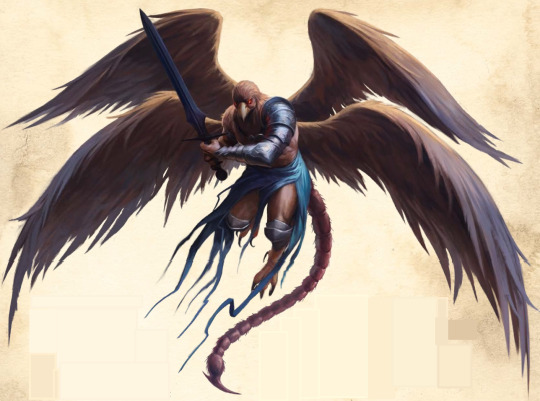
CR 30
Chaotic Evil Large Outsider
Bestiary 4, pg. 50-51
(Image from the Complete Book of the Damned, pg. 87)
Among the eldest and most powerful of the Demon Lords, Pazuzu was one the first non-Qlippoth demons in all existence along with his former lover, Lamashtu. His dalliances with Lamashtu during the early days of creation were things of both legend and horror, their meetings on fledgling worlds striking the unfortunate planets with the force of asteroids and populating them with all manner of unholy creations. Both of them would scheme and vie for the position of God of the Abyss, but in the end, the throne would only accept one. Tearing the domain of beasts from the god Curchanus, Lamashtu ascended to the rank of Demon God and kicked the ladder out from under her, preventing anyone else from following in her shadow. She now regards Pazuzu as little more than someone she dated in the past, nothing more than a brief fling... something which whips the winged Demon Lord into a berserk, frothing fury.
Or, well, it did. As the ages have passed, Pazuzu has gotten more subtle and patient, and has begun seeing value in manipulating mortals. He's begun to work in Lamashtu's shadow, weaving just enough purposeless destruction into his antics that she barely registers his presence with anything but passing interest, but with every word whispered into the ear of a willing mortal, he erodes the pillars on which the Demon Queen has built her castle by another slight scratch. It may take a few thousand more years yet, but he has all of eternity; one of the perks of being at the top of the pecking order himself. Very, very few other Demon Lords wish to cross him, and for good reason. That "CR 30" isn't just for decoration!
The other biggest reason is that almost every Demon Lord in existence has some manner of flight speed, and Pazuzu's Avian Mastery means ANY creature with a natural, nonmagical flight speed must make a DC 40 Will save to attack him; failure causes the attack to not only fail, but also locks the victim out of being able to directly attack Pazuzu for 1d4 rounds. This ability is unlikely to come up against players (unless they're all Strix, for whatever reason), but he has a great many other tricks that definitely will.
To anyone coming here from D&D, yes, Pazuzu still retains his most famous ability: Hear Name. He can hear his name every single time it's spoken aloud by anyone on any world or plane and through every barrier and form of protection there is. This ability presumably works on any speaking creature, gods and innocent scholars and babbling toddlers alike, so one could imagine it getting annoying for him. However, if his name is said thrice in the same breath (even if it's just part of a long run-on sentence), he instantly knows the exact location and true name of the speaker, which is information that's infinitely more useful for him; he rejects calls from his cultists more often than not but tends to at least investigate anyone who's unfamiliar to him on the off-chance it may be a new soul he can corrupt. Be careful trying to get his attention, though, because if he happens to be on the same plane as a creature that says his name three times, he can immediately try and Possess the poor fool and ride along in their soul for the remainder of their days (or until he possesses another target but shh).
That may not seem especially useful as a Demon Lord who spends most of his time in the Abyss, but Pazuzu is explicitly noted to not do that. To avoid divine retribution he must remain hidden (at-will Shapechange aids in that regard) and work subtly, but Pazuzu is one of the few Demon Lords who can not only freely travel to and from the Material Plane, but often does to further his own schemes personally. How does he get there? Well, that's the fun part! All Demon Lords can use Miracle while they're within their own domains, but their Miracle can only be used to shape their realm or create an effect in-line with their divine domains... but Pazuzu goes a step further with Wish available to him 1/day, the spell completely unrestricted in his hands and allowing him to simply Plane Shift wherever he pleases without issue. Powerful enough outside his lair, but he can use the Mythic Augmented version while in his domain to perform truly berserk feats that borderline breaking the game's rules entirely. Mythic Augmented Wish is basically a blank check in the DM's hands, and it alone is what allows the Lord of Temptation to steer the mortal world in whatever direction he desires.
If he doesn't Wish himself into the universe, he may still use Astral Projection (as all Demon Lords can) to send his essence in instead, his projection acting in every respect as his flesh and blood body, including being able to use Possession on anyone who speaks his name thrice. What IS Possession, you may ask? Is it like the spell of the same name? Haha, ha, no, you WISH it was that weak. Pazuzu's Possession is the stuff of legends, a Save-or-Suck that can decide not only a battle, but a campaign if it's used successfully. Once per day as a swift action, Pazuzu can target any creature within a mile (or on the same plane, if the target is someone who spoke his name thrice) whose name he knows and attempt to possess them. That target has one DC 43 Will save standing between them and the Demon Lord being able to ruin their life; if they succeed, Pazuzu can never attempt to possess them for as long as they live (being killed and returning to life voids this warranty), but if they fail? Ooh boy.
Pazuzu can permanently read the mind of a possessed creature and, by concentrating, can receive all their sensory information. Not so bad so far, especially since the creature retains their own will and control over their body, but this is only at the Demon Lord's whim. As a swift action, he can seize total control of their body and command them to perform any action he wants them to, without restriction. He can force a possessed target to attack their allies, use their most powerful magic to destroy everything around them, destroy or throw aside all of their possessions, hand over a MacGuffin or slay a helpful NPC, fight alongside him or grant him their resources, or even end their own life, and the victim has no ability to resist his control or deny his orders. No saving throw, no force of will, no nothing. While the overt uses are bad enough, if the Demon Lord is especially cruel, he may have his victim speak their true thoughts--no matter how damaging to the party's relationships they may be. He always knows what they're thinking and can force them to say whatever he wants, including just straight up making up "truths" for his victim to helplessly spout, but sometimes the real truth is more painful than any lie he could conceive.
He can use his swift action to command his possessed victim to perform any action they could take on their own, but he has an even worse trick as well: He can channel his spell-like abilities through his puppet as well. Mercifully, the spells are scaled to the victim's stats rather than his own, so a creature with 5 Hit Dice would only deal 2d8 damage with his Unholy Blight and Telekinesis would only last 5 rounds, so it's all fairly balanced... except for Whirlwind and Summon Demons, the former conjuring a destructive, controllable cyclone that can bodily lift and throw Medium creatures like pebbles, and the latter a spell-like that Pazuzu can use 3/day as a swift action which conjures a flat CR 20 encounters-worth of demons regardless of the possessed host's level. The only thing their level affects is how many rounds the cyclone or the demons stick around, and even just 3 rounds is enough time for them to wreak unholy havoc before vanishing.
Other tools at Pazuzu and his puppet's disposal include, but are not limited to: Desecrate, Blasphemy, Shapechange, and Dominate Person all at-will. At 3/day there's the aformentioned Whirlwind, Quickened Dominate Person, Sympathy, and Symbol of Persuasion, and finally as his 1/days besides his Wish, there's Dominate Monster and Time Stop. Useful enough in his hands, but combining them with the talents of his puppet? He may not have to lift a finger. Beyond these, the uses for Greater Teleport at will are infinite, but with his ability to force his puppet to use it, he could easily kidnap them from across any distance by having them teleport right to his side for whatever wicked designs he has.
One DC 43 Will save failure is all he needs... but luckily, a Lawful creature gets a +10 bonus to this save, while a Good creature gets +20, and both these bonuses stack for Lawful Good creatures, meaning the shining paladin of Iomedae only has to succeed a DC 13 save to avoid being possessed, so pathetically low that characters expecting to engage the Demon Lord in combat can only fail if they roll a 1 and even common citizens have a fair chance at battling his influence. Unfortunately, as Lord of Temptation, he does have a trick for that: Profane Wishcraft. Any creature that accepts a Wish from him--even if they're coerced, mislead by Shapechange or a possessed victim, tricked into it by Sympathy, or controlled via Dominate--has to make a DC 43 Will save or have their soul contaminated and shift immediately to Chaotic Evil. While this is terrible enough for the hope of their immortal soul, it also leaves them open to Possession without the protection of their alignment.
We've talked a long while about Possession, but in truth it's Pazuzu's biggest and most flexible tool, and his most unique ability. It's not mind-affecting or any form of curse, so there's no way to avoid it but its saving throw. The victim can't end it by their own action (because he'll know and stop it), and any creature who breaks the effect via Dispel Evil or Dispel Chaos must succeed a DC 30 caster level check or he just possesses them instead. Even if it's ended, here's a fun fact: There's no per-day restriction for any creature that says his name three times, so the unfortunate victim is one Suggestion or Dominate away from being worn like a puppet all over again!
If Pazuzu didn't have access to this signature ability... well, there's just not a lot that's actually special about him. He's powerful, yes, but generically powerful, using potent but boring spell-likes to seize control of his enemies and smashing apart what he can't control with his Scepter of Shibaxet, a personal artifact he can call to himself at any time. In its scepter form, the Scepter of Shibaxet can pinpoint the exact location of any creature hostile to its wielder at-will (a boring but incredibly practical power), can be presented as a standard action to induce panic in all creatures within 60ft who fail a DC 23 Will save, and can 1/day be used to permanently destroy any magic item. That last one is sure to raise an eyebrow or two, especially if your big suit of magic armor was the only thing standing between you and the Scepter's alternate form as a +5 Anarchic Keen Unholy Longsword! That's 2d6+20 damage up to four times a round, +2d6 if you're Good or Lawful and +4d6 if you're both. If he's being harried or feels like harrying, he can use Flyby Attack and Greater Vital Strike in tandem with his 150ft fly speed to deal 6d6+20 as a single blow instead.
However, he's incentivized to stand and fight. Not only for his weapon Full-Attack, but because he's also got a painful beak (2d6+15), his free hand and his two birdy talons (1d6+5), and his lengthy scorpion tail (2d8+15) loaded with a poison that not only drains 1d6 Wisdom with each failure to resist it, but nauseates the poisoned victim. In addition, if Pazuzu doesn't move more than 5ft in a round, he becomes surrounded by his Aura of Locusts that pour from his mouth and fill a 10ft square around his already 10ft body. Any creature that enters or starts their turn in this space must succeed a DC 43 Fortitude save or be nauseated... but I can't help but feel this is a tragically missed opportunity. Why not let his locusts do extra damage? Why not give him a free Vomit Swarm every round? Why doesn't he have Creeping Doom or, hell, just Insect Plague since he literally passively exhales insects? It'd make him a lot more interesting than he ends up being!
But I suppose that's why he's as close to a "demon king" as there currently is in Pathfinder. His kit is simple and effective, as he's essentially an incredibly fast and incredibly resilient melee tank, with his standout Possession ability carrying a thousand plot-hooks and party wipes by itself. The relative dullness of his kit in battle is made up for by all the chaos he can cause out of battle, granting wishes and demonic powers to his mortal thralls and minions, and using his menagerie of crafting feats to gear them up to deal with whatever would make them nigh-insurmountable threats to the party... or to tempt the party into working for him with whatever treasure they need to combat an entirely different, more immediate threat. In this way, he serves almost the same purpose in the Abyss as Mephistopheles does in Hell!
You can read more about him here.
37 notes
·
View notes
Text
Danny and Sylvia: he’s a strix and a demon, he’s murdered before and will again, he’s old as shit.
Víctor, wearing ridiculously oversized clothes that make him look like a stick figure, remembering the Touch Of Lips And Teeth:
I can fix him
#what manner of man#st john if you see this thanks for the chapter!#father ardelian#he’s so real for this#a grown ass man basically going “but mooooooom I love him at two angry lesbians.
53 notes
·
View notes
Text
Day 7 of October:

Inoko, Mukago, and Tamiko, Uzui's infiltration team in What Could Have Been. I am no makeup artist (I'd like to make a joke along the lines of "the only thing I know about makeup is [blatantly obvious thing] but I don't even know any blatantly obvious makeup facts) but I certainly would like to think these three look better than whatever Uzui would have done.
#art#demon slayer#kimetsu no yaiba#october#inosuke hashibira#enmu demon slayer#mukago demon slayer#colliding trains of plot#would they have these colors of eyeshadow in the 1910s?#I dunno maybe they're from Ume's secret stash or something#if Inosuke's hair looks weird it's because I closed out my reference before coloring and didn't really want to go back just for his hair#Strix draws things
2 notes
·
View notes
Note
First off, thank you for creating Muted, it's by far one of my most favorite webcomics ever!
Second off, say Athalie had completed her demon speedrun and visited Trea to live there full time. What would her relationship with Strix look like? Can demons die (ie would athalie throw hands on sight lmao)? Would Athalie be a more powerful version of Strix so that if a wicked human were to summon an evil demon, Demon!Athalie would show up instead of Strix? Or would they reconcile and become trouble twins/an evil duo or something? I'd love to hear your takes!!!
Thank you so much!! Ahhhhh
And oooo interesting question.
Strix isn't the only 'evil' demon by any means. So if a human were to try and summon a demon it is based in some way on the true subconscious wants/desires of the person. A demon that is willing/able to give you what you want (if you are willing to pay that price)
for example Raum or Dendro would never be able to be summoned by Athalie in that wish ritual since they would never be willing to do what she wanted.
So Athalie wouldn't be summoned INSTEAD of Strix she would just be summoned for a different sort of person. A lot of Athalie's transformation was based on her desire for power and violence and she might have more raw power than Strix physically but she would lack the more covert/illusion aspect.
That being said, Athalie reveled in her transformation because it was the first time that she felt she was not only in complete control but also free from all the restrictions that she'd placed on herself up to that point. So I don't think she would be angry at Strix upon seeing her again - at worst she would Nothing her but I think she'd see Strix's failures as just part of the roadmap that led her to her full demonic state.
However, I can't imagine they could actually stand to work together LMAO even if they reconciled in some capacity they'd make a bad team.
38 notes
·
View notes
Note
Another thing where the expected fantasy tropes could get turned on their head in the Convergence AU. (I hope I can explain what I mean.)
We have mentioned European stock monsters like orcs and demons, and Japanese ones like oni, and those tropes twisted around. But Europe has many cultures, and the world beyond Europe has many more. And even within, there are local variations. Since people traveled, trade and culture exchange have existed. (Even if it sometimes / often was forced.)
An example - there are many variations in blood-sucking monsters on Earth. Are you sure you're dealing with the specific, undead variation popularized by Bram Stoker's book? Or is it a strix (from Greek)? Or a vetala (from India)?
Another example - regions on Earth have relatively stable convergences that map to one region in the other world. Local variations like in architecture would throw people on Earth for a loop at first if they mostly saw one variety before.
Sorry, I posted my previous ask too early.
That's not to say that the beings of different cultures appear willy-nilly everywhere, whicih would say that they are interchangeable. But rather that people have to see beyond their bias and consider that there's a rich world out there.
Part of Convergence Event is that it's based on a slightly twisted version of the Stock Fantasy Setting you see in a lot of isekai anime/light novels inspired by some of the older Dragon Quests and Final Fantasies, which means it's deliberately something of a Fantasy Kitchen Sink. Having different CE architectural styles mapped to Earth regions could be cool
26 notes
·
View notes
Note
Thief of Heart analysis + playlist.
The Thief of Heart [symbols: money bag, heart]
The Thief class is based on the classic thief trope. An example would be the pirate Blackbeard.
The Heart aspect’s main theme is instinct. You can find its official description here.
A Thief of Heart is among those who use the individual's impact. This is the “classpect group” they belong to. Members include: the Knight, Page, Thief, and Rogue of Mind/Heart. These classes are all opposites or inverses of each other that use the Mind/Heart dichotomy (the individual's impact). A description of classpect groupings can be found here.
The Thief of Heart actively steals the Heart aspect. Active classes tell themselves what to do and do so for their own benefit. They are more likely to stand up for themselves, but more likely to be cruel. Thieves and Rogues steal their aspect and everything it symbolizes to grant it to someone else. Simplified, the Thief of Heart is motivated by themselves to steal instinct.
In personality, the Thief of Heart enjoys feeling powerful and is invested in self discovery. Personality descriptions can be found here.
Their archetype is the Spy Free Spirit, defined by power and instinct. Archetypes are explained here.
Their opposite is the Rogue of Mind, who passively steals intuition.
Their inverse is the Page of Mind, who passively utilizes intuition.
A classpect or “god tier” is an individual’s best self. All classpects go through a journey from unrealized, to struggle, to realized. When a character is unrealized, they neutrally exist as their inverse. On their struggle, they will wildly flip back and forth between their inverse and true classpect. In their worst moments they will act as their inverse, in their best their true classpect. When realized, they will stabilize as their true classpect. They will still have room to grow, but will become happier, more successful people.
This means that the Thief of Heart begins life motivated by others to utilize intuition. When their struggle arrives and they are at their worst, they will continue this behavior in negative extremes. However, when at their best, they will find purpose in instead stealing instinct for themselves. When realized, they will stabilize and continue to steal the Heart aspect actively, in a positive way.
They share their archetype with the Rogue of Void, the Free Spirit Spy.
The Thief of Heart would quest on a planet similar to the Land of Valuables [Thief] and Heart [Aspect]. An example would be the Land of Castles and Arteries. An explanation of planet naming conventions can be found here.
Two possible gods, or denizens, to reign over their planet would be Aphrodite (Goddess of Love) or Yaldabaoth (Trapper of Souls). Other Heart aspect denizens can be found here.
When the Thief of Heart completes their planet quests and dies on their quest bed, they would rise to ascension on the wings of ladybugs (symbols of love). A list of soul animals can be found here.
The characters that I have currently classpected as Thieves of Heart are: Query from Batman, Marina from Ke$hastuck, Regina Mills from Once Upon a Time, Nessarose from Wicked, a Desire Demon from Dragon Age, Josie Packard from Twin Peaks, and Sydney Barrett from Legion.
If any of the links not connected to my blog break, the content can be found on my Google Drive.
Official Aspect Descriptions
Personality Descriptions
Aspect Denizens
Songs for a Thief of Heart:
In the Name of Love (The Him Remix) by Martin Garrix ft. Bebe Rexha
Heart Afire by Defqwop ft. Strix
Feel the Fire (Egzod Remix) by Pluto x ye
Crash Your Party by Karmin
Irresistible by Fall Out Boy
Horns by Bryce Fox
Would You Be So Kind by dodie
#thief of heart#god tier analysis#classpecting#homestuck#my post#ask#diedre vance#batman#marina and the diamonds#ke$hastuck#regina mills#ouat#nessarose#wicked#desire demon#dragon age#josie packard#twin peaks#sydney barrett#legion fx#god tier songs#classpecting songs#classpecting music
6 notes
·
View notes
Text
Now we're into the real demon lords of the Tome of Beasts. Alquam is a massive owl demon monstrosity of the night and secrets, and all the information for this is going to have to be in two separate sections for the different systems I'm posting for.
Pathfinder 2e
Alquam, the Silent Black, Eyes in the Night, the Dark Hunter. He is a creature of eternal darkness, who is said to be able to hear any words whispered in shadow or at night. Owls are his favored representative, and owl-like monsters such as the owl harpy may be the result of his influence and interference. The most favored of his humanoid followers are any strix he has lured into his service, to the point where one of his other mortal creations bears the name stryx in homage to the ancestry. He delights in music, though his favorite songs tear at mortal sanity and contain notes and sounds outside most creature’s hearing range.
In his true form he appears as a massive, monstrous owl composed mostly of darkness. His lair is hidden within the layers of the Abyss, cloaked in darkness so deep that no creature can see through it save with his blessing. Any dark, shadowy corner of the Abyss may lead to his lair if he so wishes, and his night-bound subjects spy on all.
Areas of Concern darkness, owls, secret information
Edicts gather information secretly, live by night, hunt living creatures
Anathema bring light to darkness, kill an owl
Divine Attribute Dexterity or Wisdom
Devotee Benefits
Cleric Spells 1st: tailwind, 2nd: invisibility, 4th: aerial form
Divine Font harm or heal
Divine Sanctification can choose unholy
Divine Skill Stealth
Domains darkness, knowledge, secrecy, trickery
Favored Weapon war razor
Alquam's mortal followers are rare, and tend to be spread out in small cells dedicated to the night. Higher ranking members will oversee multiple cells and dole out tasks, usually for gathering useful information or eliminating troublesome foes. The following stat block represents one of these killers, an assassin rather than a spy, who is dedicated to destroying the foes of the Eyes in the Night.
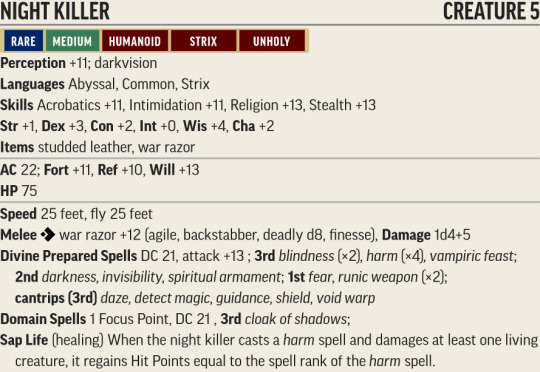
Night Killer Creature 5
Rare, Medium, Humanoid, Strix, Unholy
Perception +11; darkvision
Languages Abyssal, Common, Strix
Skills Acrobatics +11, Intimidation +11, Religion +13, Stealth +13
Str +1, Dex +3, Con +2, Int +0, Wis +4, Cha +2
Items studded leather, war razor
AC 22; Fort +11, Ref +10, Will +13
HP 75
Speed 25 feet, fly 25 feet
Melee war razor +12 (agile, backstabber, deadly d8, finesse), Damage 1d4+5
Divine Prepared Spells DC 21, attack +13 ; 3rd blindness (×2), harm (×4), vampiric feast; 2nd darkness, invisibility, spiritual armament; 1st fear, runic weapon (×2); cantrips (3rd) daze, detect magic, guidance, shield, void warp
Domain Spells 1 Focus Point, DC 21 , 3rd cloak of shadows;
Sap Life (healing) When the night killer casts a harm spell and damages at least one living creature, it regains Hit Points equal to the spell rank of the harm spell.
13th Age
Alquam is the overseer of a much more subtle Hellhole. While the standard Hellholes rip giant gashes into the world, spit out fire and brimstone and spill out thousands of demons in a vicious invasion, Alquam's is instead a pit of impenetrable shadows that slowly flow out over the surrounding terrain. While those in power are aware of the Endless Night, its lower active threat means it's getting less attention than other Hellholes that constantly spit out active threats, and so for the moment it floats under the radar. Besides, the few shadowy demons that have spilled out have been easily handled by local adventurers, so the threat is minimal.
Unknown to any (except the Diabolist and perhaps the Prince of Shadows), deep in the center of this darkness rest Alquam, a demon of immense power who fuels the constantly spreading night. His goal is eternal darkness over the land, and the longer his plot is ignored the faster the shadows will spread, until it will be too late for anyone to hem them in.

Alquam
Large 13th level spoiler [demon]
Initiative: +20
Beak +18 vs. AC - 150 damage.
Miss: 75 damage.
Beating Wings +18 vs. PD (2 attacks) - 25 damage and the target pops free from Alquam.
Natural Even Hit: The target also loses its next move action.
Quick Use: 1/round, as a quick action.
Talons +18 vs. AC (1 attack, or 2 attacks if flying) - 25 damage, and the target is grabbed. Alquam can grab one target at a time, or two if he is flying.
Natural 16+: The target also takes 20 ongoing damage while grabbed.
Quick Use: 1/round, as a quick action.
Cloak of Night: Alquam can spend a quick action to cloak the entire battlefield in clinging supernatural darkness. Each creature except for him becomes dazed (save ends) whenever it rolls a natural odd number on any die.
Flight.
AC 28 PD 26 MD 26 HP 828
Inspired by the Tome of Beasts 1. This post came out a week ago on my Patreon. If you want to get access to all my monster conversions early, as well as access to my premade adventures and other material I’m working on, consider backing me there!
#pathfinder 2e#13th age#homebrew#my homebrew#monster#NPC#humanoid#demon#pathfinder level 5#13th age level 12#tome of beasts#long post
5 notes
·
View notes
Text
Fighter Pilot Callsign names

Names for pilots for your Top Gun fanfics
FYI most Callsigns are a play on names or to tease the person who gets them
Names Like Ice-Man
- Blizzard
-Frosty
- Avalanche
-Chilly
- Cloudy
- Hurricane
- Cyro
Names Like Rooster/Goose
- Hen
- Mother Hen
- Birdie
- Chicken
-Falcon
- Hawk
- Crow
- Raven
- Eagle
- Finch
- Basan
Names that have the same personality as Iceman and Hangman
- Balloon Buster
- Devil
- Risky
- Riot
- Demon of (insert hometown)
- Killer
- Mad Major
- Rouge
- Black Knight
- Silver Fox
- Wrong Way
-Bloodlust
- Agony
- Apex
- Electroman
- Razor
- Dead Walker
-stinger
Names that are similar to Phoenix
- Harpy
-Fairy
- Griffin
- Imp
- Basilisk
- Kraken
- Medusa
- Chimera
- Cyclops
- Owlman
- Strix
- Thunderbird
- Hellhound
- Hydra
- Werewolf
Names with the same personality as Maverick
- Dark Swallow of Death
- Red/Brunette/Blonde Devil
- Kaboom
- Cats Eye
- Butcher
- Longshot
- Chaos
- Tex
- Hyde
- Pyro
- Rebel
- Stray
- Ace
- Pompeii
- Dead Walker
- Rampage
- Rumble
Other names
Names for those who stay hidden well
- Ghost
- Ghostrider
- Stalker
- Vapor
- Zombie
- Casper
- Reaper
- Stranger
Names to do with the wind/sky
- Lucky Breeze
-Apollo
-Artemis
- Zeus
- Zephyr
-Steel rain
- Tornado
- Dove
- Astro
- Moony
- Halo
Names for ‘rebels’
- Lucky
- Dice
- Gamble
- Gambit
- Flatline
- Giggles
- Dirty
-Bloody Bucket
- Pandora
- mamba
- Havoc
- werewolf
- BamBam
- K9
- Mutt
Names for small people
- Petite
- Ratsy
- Rudy
- Smalls
- Yoda
- Big Boss
Names for annoying people
- Alf (stands for annoying little fuck)
- Grumpy
-Smiley
- Grinch
- Sunshine
- Flatline
- Joker
- Jester
- Bonk
Names for smart/tactical people
- Cypher
- Jigsaw
- Jinx
- Mastermind
Names for people who are stuck-up/cocky
- Headliner
- Bruise
- Dynamite
- Dusty
- Fireball
- Showoff
- Twitch
‘Scary’ names
- Great White
- Nightmare
- Omen
- Ripper
- Taz
“Nature names”
- Cherry
Other names
- Resident
- Dogface
- 22 (Like Catch-22)
Updates
- Nov 1, 2022 - added new names
- Nov 24, 2022- new names
- Mar 5, 2023 - new names
If you have any suggestions on what to add, please let me know!
#Topgun#pete maverick mitchell#topgun maverick#bradley rooster bradshaw#robert bob floyd#bob#maverick#fanfic#fanfiction#rooster#nick goose bradshaw#goose#Natasha Phoenix Trace#phoenix#fanboy#payback#tom cruise#glen powell#iceman#val kilmer#tom kazansky#pilot#navy#top gun fanfic#x reader#oc#rooster x y/n#rooster x reader#iceman x y/n#iceman x reader
52 notes
·
View notes
Text
I wrote a long post about how excited I am to develop a new CofD crossover story for my group based on Dark Eras: Sundered World, but Tumblr ate it 🙃

Oh well. The gist is that there will be Neolithic Mages, Werewolves, Changelings, and Prometheans. They'll travel Eurasia and find a bunch of weird unexplainable things, meet nearly extinct hominids, interact with early civilization, and (if they follow the clues) find a dinosaur.
The big bad is a giant Strix who lurks in the Carpathians and calls itself Kupala. It harasses demons and spirits for fun. It unsuccessfully flirts with Luna. Lies are its native language. It's going to be hell to deal with this thing, but I'm leaving plenty of opportunities for good and not so great resolutions.
... I wish my first post survived lol it was far more eloquent
13 notes
·
View notes